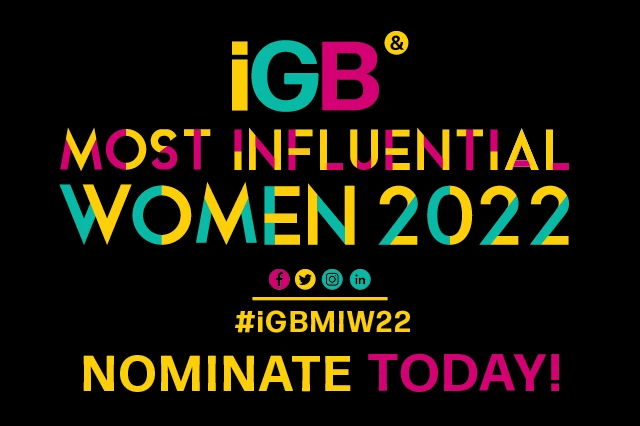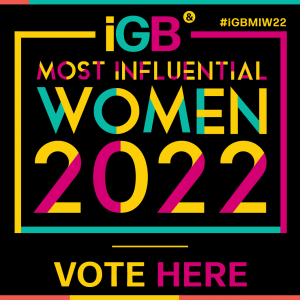Influential Women 2022: Cause and effect vs supply and demand

Cause and effect. Supply and demand. Two basic concepts that have shaped the way humans have lived, worked and played since life began.
They work together hand-in-hand in a ‘domino fashion’ (when an event creates a need to be met; for example, the global pandemic led to the need for PPE). Sometimes it goes the other way and the results of supply and demand actually impact cause and effect. That is when things start to get really interesting.
The betting and gambling industry is a mirror on the world, accurately reflecting changing attitudes and values in society towards the work-life-play balance better than any other sector. If this is true, then the trends identified in this year’s All-Index report should be a wake-up call to us all.

While the data confirmed the shift towards remote and flexible working, there is a greater reflection of changes in social attitudes and values with more organisations moving from maternity to parental (including same sex) policies. This pivot from diversity policy to inclusive practice also provides an early insight into three new trends that have threatened to turn the equilibrium of cause and effect and supply and demand on their respective heads.
For the first time in the history of the Index, the number of women in the industry has dipped below 50%. This is not evenly distributed across the board, however. The percentage of women at manager level and upwards is, for the moment at least, around 50%. However there is still work to do at the top, where only some 30% of females occupy executive and non-executive board roles.
The drop is at entry level and raises the question: how does a slide in the supply of women coming into the industry affect our drive to get more women to the top?
The drop in numbers may be for a variety of reasons, including the push towards sports betting, which is traditionally viewed as being dominated by males. But the number of female traders in the same period has risen. So if this is not product-driven, then what?
The first two reasons are Covid-19 and what is now termed as the great resignation. The global pandemic forced many to make radical changes to work and life. For some, this morphed into an opportunity to re-evaluate life and career choices, and to pivot priorities as a result. This was especially true of women, who were suddenly forced to take a step back from the stresses and pressures of the career treadmill and, in doing so, found themselves starting to enjoy life again.
For some, it was the way in which employers reacted to the pandemic, with many turning away because they felt unheard or undervalued. For women juggling complex personal and professional lives, the increase in remote working shone a spotlight on some of the inequalities within the workplace. Not everyone’s domestic circumstances supports remote working, and those most negatively impacted are likely to be lower down the ranks.
Secondly, our Covid-19 impact study in partnership with Meta gave us our first insight into Gen Z (Generation Z – those born after the year 2000), who are now starting to come into the workplace. The survey showed how out of touch older generations are with this new group of people, whose attitude to work and life is driven not by material gain but by values and a sense of purpose.
For them, it is not so much what a company does, but how it does it. They expect a work-life balance and an opportunity to reach their potential with an employer who mirrors their values of social responsibility, diversity and inclusion.
As an industry, we still have a long way to go if we want to deliver on these expectations. Go to any conference, even those that claim to support diversity, equality and inclusion efforts, and it is all still very male and pale.
All of this impacts on the number of women coming into the industry and will, over time, have a direct impact on the number of women progressing up the chain.
Unfortunately, our problems do not stop there. The third big trend is a case where supply and demand has had an impact on cause and effect. The desire among organisations to hit quotas for women at senior levels has had the effect of opening up a conversation on what has been a relatively taboo subject to date – the menopause.
Early research has indicated that the symptoms relating to menopause have resulted in women being denied promotions or pay rises (and in some cases even being subjected to disciplinary processes) on the grounds of ill-health or too much time off sick.
Unless we start to address this, we are heading towards a chicken and egg situation, where the lack of supply at entry level is going to have a direct impact on demand at the top. Females coming into the sector need aspirational role models and mentors. Unfortunately, with over 85% of potential role models falling into the traditional demographic of white or male, our current role models are likely to fall short of expectation or simply attract more of the same people.
We should also keep in mind that this is the age of the influencer, and that Gen Z’s idea of what makes an influencer is not the same as the established view. For this younger generation, they are not necessarily someone who has made it to the top, or who even one who wants to do so. Many aspire to be recognised within their peer group, or choose to eschew those on the public stage by preferring to recognise those who work behind the scenes.
If all women see is an industry populated by a bunch of people who they can’t really relate to (mainly men or someone else’s definition of what a female role model looks like) why would they want to get involved?
We need to put in the effort now to ensure that we attract and retain talent at every level, but we will only do this if we have role models, champions and influencers that are relatable at every level, not just at the top. Unless we do this, we risk finding ourselves in a position where supply no longer meets the demand.
We need more influential women – and we need them now.
Nominations for iGB’s Most Influential Women 2022 close on 28 October. Nominate someone here.
Christina Thakor-Rankin is co-founder of the All-In Diversity Project.

